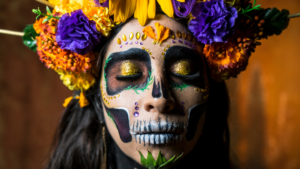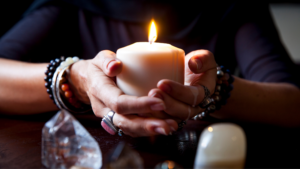Your vision will become clear when you can look into your own heart. Who looks outside dreams. Who looks inside awakes.
Carl Jung
ANAHATA HEART CHAKRA: THE FOURTH IN OUR SEVEN CHAKRA SERIES
The Anahata Chakra maps to our heart and lungs. It is tied to our nature-nurture development, through both belonging and individuation. Variations in our archetypal identities (Hero, Sage, Healer, Jester, etc.) helped humans survive in small hunter-gatherer groups. When Jung developed his archetypal theories through the study of myth, symbolism, and philosophy he studied cultures the world over – including philosophies such as the Chakras in India.
Metaphorically, our Root Chakra grounds us in the earth. Our Sacral Chakra moves us through the element of water. The Solar Plexus Chakra activates us with fire. The Heart Chakra inspires us via the element of air. Inspire comes from the Latin enspirare meaning to breathe into. An open Heart Chakra means we are open to connecting to ourselves, others, and the world with compassion. One that encompasses the rainbow of being.
Jung identifies Krishna as representing individuation. In one legend tied to Holi, Krishna fears his beloved will spurn his affections because his skin is blue. He playfully paints her face with watercolors. Radha is delighted, she sees his true nature and realizes they are kindred spirits. On Holi, in a nod to Krishna and Radha, loved ones paint each other’s faces as an expression of affection. This love and affection spills into the streets as people dance tossing rainbow-colored powders in the air.
These days, we tend to form social groups with like-minded others rather than for survival. So, the pressure to conform may supersede our expression of individuation. This can create internal and external conflicts. Psychology tells us when we assume and judge the perspectives of others we are less open. This makes it difficult to find a common ground.
Here are some reflection opportunities to open our hearts to understanding:
- Type yourself and a willing partner/friend: Most personality typing systems are derived from Jung’s archetype foundations. I’ve worked with them for decades and have come to find the EPS or Enneagram system the best for opening our hearts to understanding ourselves and others. Take the test, read about and share your results with each other. Here is a link to a free test and here is a link to a sweet little book by Lynn Roulo Headstart for Happiness if you want to dive a little deeper.
- Gain some perspective: Perspective-getting is a process to understand a person better. Set aside your preconceived notions and perceptions and get curious. When you catch yourself making an assumption about what someone thinks feels, says, or does. Stop yourself and inquire. One of the easiest ways I have found to employ this strategy is through the exploration of metaphors. People use them all the time as a shorthand that circumvents deeper communication. When you hear someone use one like, “well that is a slippery slope” simply ask them to explain what they mean by it. They might even answer with another metaphor!




